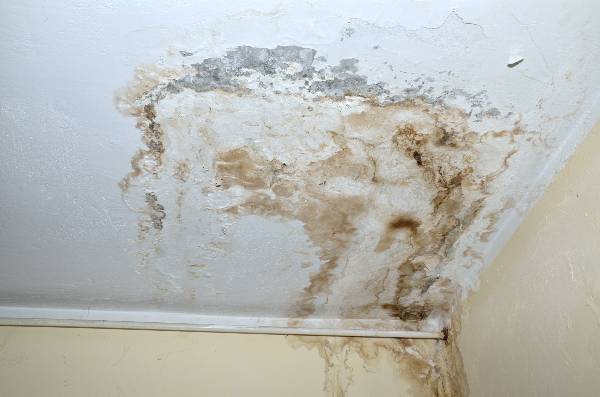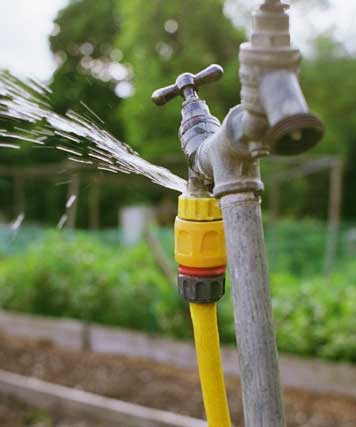Six Methods to Detect Hidden Water Line Leaks Efficiently
Six Methods to Detect Hidden Water Line Leaks Efficiently
Blog Article
We've found this article relating to Locating water leaks listed below on the net and accepted it made sense to share it with you on this page.

Early detection of dripping water lines can mitigate a prospective calamity. Some small water leaks may not be visible.
1. Check Out the Water Meter
Every residence has a water meter. Examining it is a surefire manner in which aids you discover leakages. For starters, switch off all the water sources. Ensure nobody will flush, use the tap, shower, run the washing machine or dishwashing machine. From there, go to the meter as well as watch if it will alter. Since no one is using it, there need to be no activities. That suggests a fast-moving leak if it moves. If you spot no changes, wait an hour or 2 as well as check back again. This indicates you might have a slow-moving leakage that might even be underground.
2. Examine Water Usage
If you find abrupt modifications, despite your usage being the very same, it implies that you have leaks in your plumbing system. An abrupt spike in your bill indicates a fast-moving leak.
On the other hand, a consistent rise on a monthly basis, despite the same practices, reveals you have a sluggish leak that's additionally gradually intensifying. Call a plumber to completely examine your residential or commercial property, especially if you really feel a cozy area on your floor with piping beneath.
3. Do a Food Coloring Examination
When it comes to water usage, 30% comes from toilets. If the shade in some way infiltrates your dish throughout that time without flushing, there's a leak between the storage tank and also bowl.
4. Asses Outside Lines
Do not fail to remember to check your outside water lines also. Test faucets by attaching a garden hose pipe. Must water permeate out of the connection, you have a loosened rubber gasket. Change this as well as make sure all connections are limited. If you've got an automatic sprinkler, it will help get it properly took a look at as well as preserved annually. One tiny leakage can squander tons of water and also increase your water bill.
5. Inspect as well as Examine the Situation
Property owners ought to make it a behavior to examine under the sink counters as well as also inside cupboards for any bad odor or mold and mildew development. These 2 red flags show a leakage so punctual focus is needed. Doing regular assessments, also bi-annually, can conserve you from a major issue.
If you know your home is already old, maintain a watchful eye on your heaters, hoses, pipelines etc. Look for discolorations as well as damaging as a lot of appliances and pipes have a life expectancy. They will certainly also normally deteriorate due to tear and also wear. If you presume leaking water lines in your plumbing system, do not wait for it to rise. Call a specialist plumber today so you do not wind up with an awful mess in your home.
Early detection of dripping water lines can reduce a potential disaster. Some tiny water leakages may not be noticeable. Checking it is a guaranteed method that aids you discover leaks. One little leak can throw away bunches of water as well as surge your water expense.
If you suspect dripping water lines in your plumbing system, do not wait for it to escalate.
How to Know If Your Home Has a Hidden Leak
Water Meter Reveals Inexplicable Water Usage
If you’d like to test whether or not there’s a leak somewhere in your home, you can do this using your water meter. Here is how to conduct the test:
Don’t use any water in your home for at least 30 minutes; this also means not turning on faucets or water-using appliances.
Go outside, and check your water meter for activity.
If your water meter shows that there was activity, even though no one was using any water, this proves that there is a leak in your home.Visible Mold or Mildew Growth
Leaks behind walls create moist, dark environments that allow mold and mildew to grow and thrive. Eventually, you might see mold growth forming on the wall closest to a hidden leak.
If mold is growing in an area that receives a high amount of moisture, such as a bathroom, it may simply be an indication that better ventilation is needed. However, if you see mold growth on a wall or the ceiling in an area where you would not expect, you probably have a hidden leak.
Musty, Mildew Odor
Sometimes you might not be able to see the mold or mildew that is growing as a result of a leak. However, the smell can give the problem away just as easily. If you catch a whiff of something musty, there’s a good chance that old water is collecting somewhere in your home that you can’t see.
Stained/Warped Walls, Ceilings, or Floors
When your home soaks up water, a variety of red flags can become visible, including ceiling stains, bubbling drywall, warped walls, and sagging floors. While these issues can be caused by excess humidity, they can also be signs that a pipe or plumbing connection has started leaking behind your walls.
Inexplicably High Water Bill
After a while, you get a general sense for what your water bill should be. If you own a pool or sprinkler system, your bill will tend to be higher during summer. However, if you receive a water bill that seems especially high, and you can’t figure out what caused it, then you may have a hidden leak somewhere that’s increasing your bill.
https://www.plumbingjoint.com/blog/2019/july/how-to-know-if-your-home-has-a-hidden-leak/

Do you really like reading up on Detecting hidden plumbing leaks? Try leaving a remark below. We'd be glad to hear your suggestions about this posting. We are looking forward that you visit us again soon. Do you know about somebody else who is curious about the subject? Do not hesitate to share it. We value reading our article about Hacks to detect leaks.
Efficient, reliable plumbing services here. Report this page